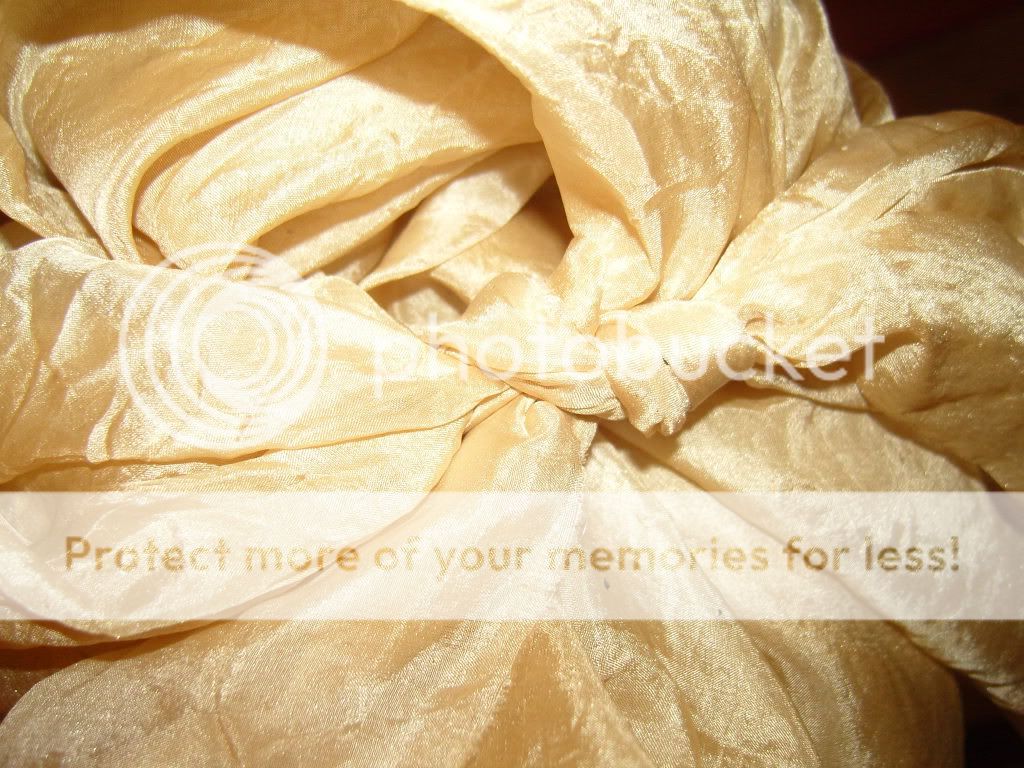Eco-Friendly Family
 daenikoffre
member
daenikoffre
member
Although alum and soda ash are natural minerals, they are still chemical and you should use gloves while working with them.
Edit: Natural Dye tutorial with PIPs :]
Although alum and soda ash are natural minerals, they are still chemical and you should use gloves while working with them.
Beets stain, they don't dye, so.. there is no way to keep the purple color. [A stain sits on the fabric and fades out. A dye becomes infused with the fabric through it's pores and also fades out eventually, but stays longer and won't change color, just get lighter.]
Here's some easy peasy natural dye recipes, and pictures. [Colors may vary due to water quality and soil alkalinity the plants grew in.] OIh, and use rainwater if you can. That's how you get the purest colors.
Red: difficult color to achieve.. for me, anyway. I use cochineal beetles when I try for red. It always comes out more magenta, hough. You can get it by using madder, but I haven't tried yet.
Orange: annato [a spice also called bixa, creates a tomato soup color]
Yellow: turmeric [bright vibrant], yellow onion skins [goldenrod color]
Green: red onion skins [olive green]
Blue: red / purple cabbage, plus salt [makes a cornflower blue]
Purple: alkanet root [shimmery silvery purple], red / purple cabbage [violet]
Brown: walnut shells, oak galls, coffe, tea
Pink: gingko leaves [peachy pink color], put in food processor before dyeing.
Instructions for all [except turmeric]: boil dye material for 30 minutes, then introduce the fabric. Let simmer for an hour or so, remove from heat, let stand for 2-3 days. [With turmeric you can use cold water and the result is the same, so, it's good for little kids to try, too!]
You don't NEED to let it sit for that long, but that's just the best way to get the most color into your fabric. If there is still more color left in the post, reheat and add more fabric! Use it up until the water is clear.
To ensure you're getting the richest colors, soak your fabric beforehand, preferably in hot water with a tablespoon (for, say.. 3 shirts) to 1/4 cup (3 shirts, 2 scarves and a gauze curtain) alum [at craft stores]. This will open the pores of the fabric allowing more color to enter.
Animal fibers work best because their pores are larger [wool, silk], and plant fibers [cotton, hemp, linen] have teeny tiny pores, so they usually come out a lighter color if not prepped.
Okay. Pictures in next post!
This discussion has been closed.







Re: Edit: Natural Dye tutorial with PIPs :]
onion skin + rainwater
annato
moss from the driveway
cabbage from the garden!
fallen lichen from a camping trip
Also, mushrooms are fun to use, too! I kinda just try and experiment with a bunch of things. It's easiest to dye with silk, so I use that most.
Here's a color chart of samples:
https://s841.photobucket.com/albums/zz334/daenikoffre/natural dyes/
Oh, and overdyes are really neat, too! Dye your fabric, let it dry, fold it up, and sandwich it between two pieces of wood [top two images] or twist itand wrap around a jar or plastic hard pole or something [bottom image], hold it together with clamps or rubber bands, and dye it again in another color!
Okay.. I got so carried away, but I get so excited when people get into this.
Hope it helps or inspires someone. Enjoy!
Great post! Thank you!!
Posts on cloth trainers/PLing
Miles (6 year old Maine C00n mix), Boots (5 year old Lab mix), Darla (4 year old GSD/Collie mix), Frankie (1.5 year old DSH mix), Peanut (15 months old - 09/11), and Bean (arriving Feb 2013).